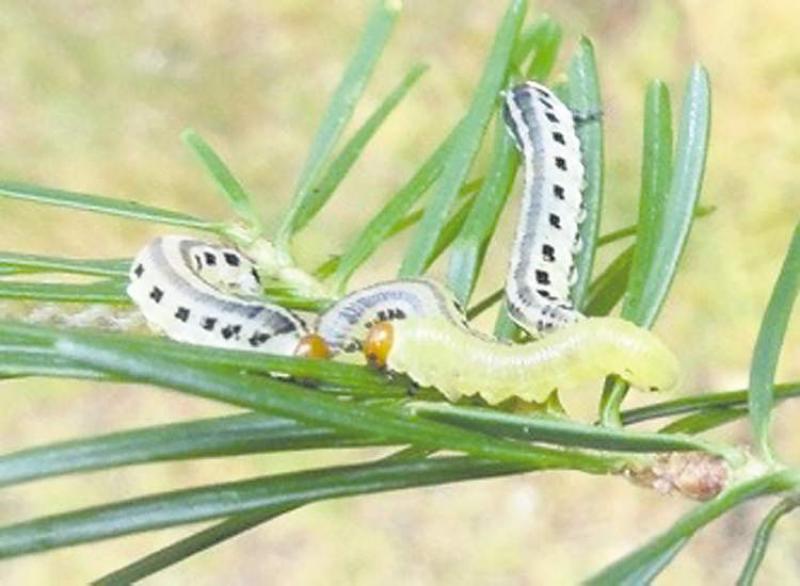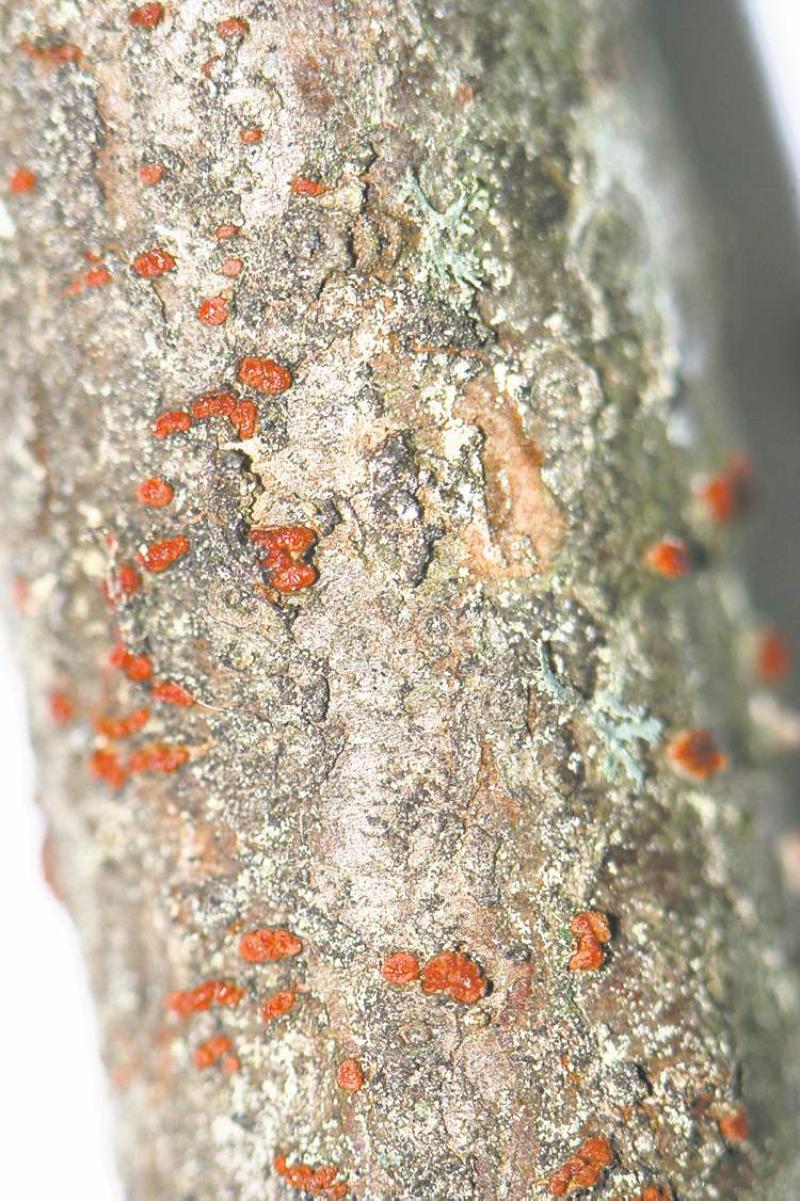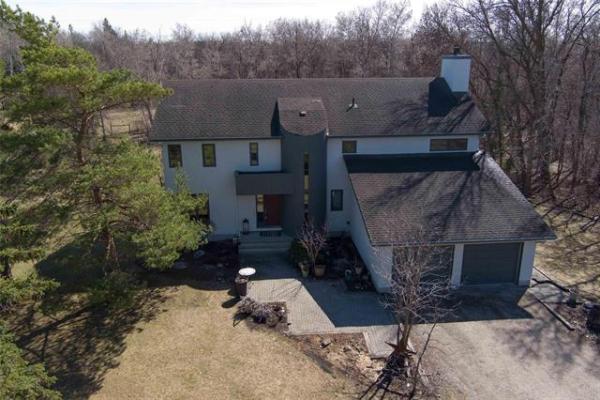

This has been a busy summer for tree diseases. Prolonged periods of hot, dry weather stress many trees and woody shrubs. I have discussed a few of these situations in earlier columns this year. During my travels in the Lac du Bonnet, Pinawa and Lake of the Woods areas I have noticed large numbers of balsam firs (a common coniferous evergreen tree) with needles turning an orange red that eventually brown off and die. This fungus disease is called coral spot (Pleonectria balsamea).
Older balsam firs look like spruces from a distance but they tend to have narrow tapering, sharp-pointed tops. Older spruces have wider tops and they do not taper to a point. The coral spots are shown in the illustration. The disease has been around for many years but I have not seen it as bad as this past summer. The disease has been made worse by excessive feeding by a caterpillar discussed below.
Many readers have asked me about these trees as well as wondering if they can be treated. As the disease is systemic (largely confined to the long conducting cells inside the tree) it is not directly treatable with externally applied fungicides. As I have mentioned many times before the best way of helping a disease tree of this nature is to properly fertilize it at least once -- twice is better -- a year. This treatment should also be done for young high-valued balsam firs. Treatments may need to be done for several continuous years. Positive results are not guaranteed, but it is the only practical treatment that can be done. Severely infected trees should be removed as soon as possible. Do not stack the wood outside in a firewood pile as the disease will persist in the logs for a while and spread to healthy nearby fir trees.
Excessive feeding by the balsam fir saw fly larvae (needle chewing caterpillars) stresses the firs making them more susceptible to infection by the disease. The chewed needles swell up as they get infected with the disease as shown in the illustration. Sawfly caterpillars can be controlled early in the season with an approved pesticide. If you spot these insects early when they are quite small BtK (a biological pesticide) can be sprayed on the trees to control them.
Michael Allen M.Sc.F., RPF is a consulting urban forester and certified arborist. He owns Viburnum Tree Experts, a Manitoba company that provides objective assessments of the condition and the care required for trees and shrubs on home and business landscapes. He can be reached at 204-831-6503 or viburnumtrees@shaw.ca His web site is www.treeexperts.mb.ca



